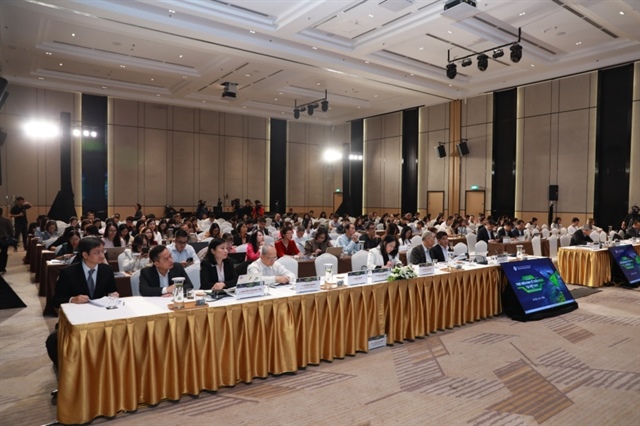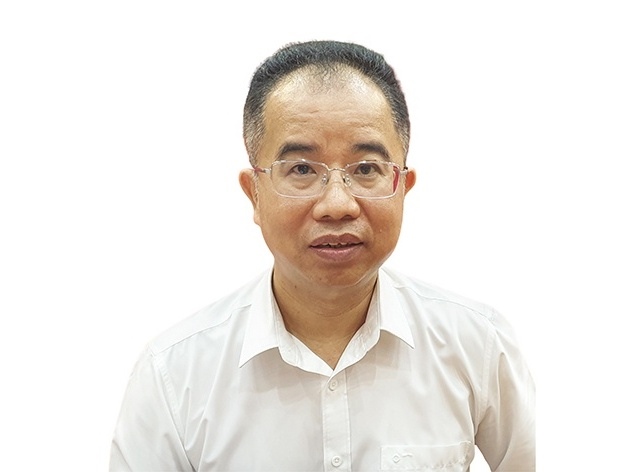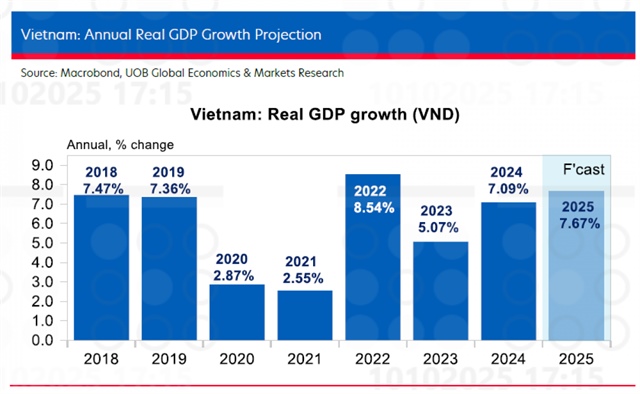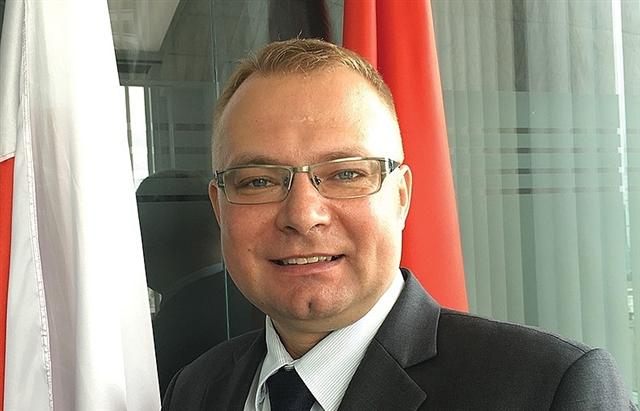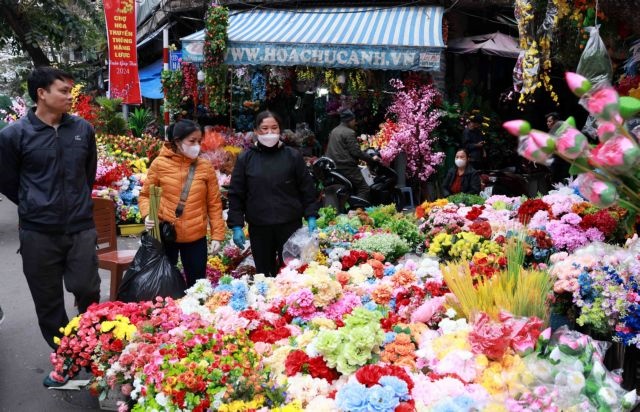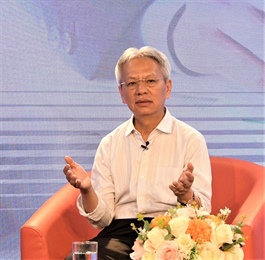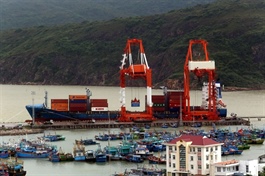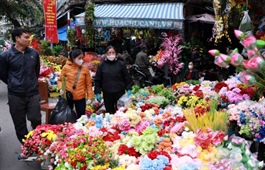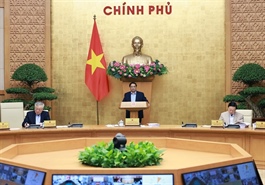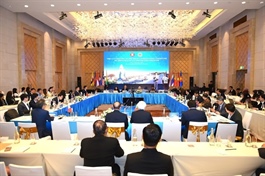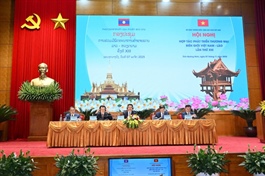Forum spotlights circular economy for green growth and net-zero targets
Forum spotlights circular economy for green growth and net-zero targets
Experts, policymakers, and business leaders convened to explore ways to accelerate Vietnam's shift to a circular economy, a key step towards green growth and achieving net-zero emissions by 2050.
|
On November 10, the Institute of Vietnam and World Economy, part of the Vietnam Academy of Social Sciences, organised a forum on advancing a circular economy (CE) model. More than 200 delegates – including scientists, policymakers, representatives from ministries and sectors, international organisations, and leading energy, environmental, and green manufacturing companies – gathered to discuss strategies for accelerating Vietnam’s transition, supporting sustainable growth, and meeting the country’s 2050 net-zero targets.
In his opening remarks, Le Van Loi, president of the Vietnam Academy of Social Sciences, explained that the circular economy is more than a trend – it is a strategic framework for Vietnam’s dual transition, digital and green. “This is the inevitable path for us to reduce resource dependency, cut emissions, enhance energy and material efficiency, while unlocking new, sustainable markets, jobs, and value chains,” he said.
According to Loi, last January’s Decision No. 222/QD-TTg, which approved the National Action Plan for the Circular Economy through 2035, represents a strategic step in implementing the objectives outlined in the 2020 Law on Environmental Protection, the Green Growth Strategy, and the National Climate Change Strategy.
Bui Quang Tuan, vice president of the Vietnam Economic Science Association and former director of the Vietnam Institute of Economics, noted that the CE concept has evolved from the traditional 3Rs – reduce, reuse, recycle – to a 10R framework, adding refuse, rethink, repair, refurbish, remanufacture, repurpose, and recover.
However, Vietnam’s current growth model remains heavily reliant on low-cost labour and exhibits a dualistic economy dominated by foreign and domestic sectors. The spillover effects of foreign investment are limited, particularly in technology transfer. Contributions from science, technology, and innovation to economic growth remain modest, labour productivity is low, and enterprises have yet to fully integrate into global value chains or adopt sustainable practices. CE initiatives are still at an early stage, largely confined to agriculture and eco-industrial parks.
Tuan outlined several measures to promote the CE model. For the government, he recommended completing the legal framework, removing regulatory barriers, and harmonising standards for CE-based products alongside existing initiatives such as the National Action Plan and Decision 687/2022/QD-TTg. He also called for breakthroughs in implementing the plan, developing waste collection, recycling, and digital infrastructure, piloting sandbox mechanisms, and encouraging research and development investment.
“Businesses should raise awareness and prepare for transformation through compliance research, consultation, investment, and partnerships; build a dual-transition culture – digital and circular – and encourage a green living mindset,” Tuan said.
From an agricultural perspective, Trieu Thanh Quang of the Institute of Human Geography and Sustainable Development highlighted the potential of an asset-based community development approach. He proposed leveraging Vietnam’s 150 million tonnes of annual agricultural by-products to create closed-loop value chains that combine biotechnology with local knowledge, advancing low-carbon and ecologically sustainable agriculture. Such initiatives complement broader CE efforts, demonstrating how resource efficiency and innovation can drive sustainable growth across sectors.
CE models in agriculture focus on reducing waste and maximising by-product use, recycling, eco-chain connectivity, and 'zero-waste' industrial design based on the 4F model (Farm–Food–Feed–Fertiliser).
"These models integrate cultivation, livestock, processing, and fertiliser production," said Quang. "Agricultural by-products are used as feed, livestock waste is converted into organic fertiliser, and solar-biogas energy is reused in operations, representing the most advanced stage of CE agriculture, moving towards zero emissions and energy self-sufficiency."
|
In the urban sector, Nguyen Thi Hanh Tien from Phenikaa University analysed current challenges in solid waste management and pilot urban models. She proposed that manufacturers redesign part or all of their products to reduce plastic, switch to more recyclable materials, and pay environmental responsibility fees for packaging recycling. Consumers should also pay disposal fees for plastic waste.
"Recycling and waste treatment must adopt new technologies and strengthen plastic waste handling capacity, along with recycling commitments among stakeholders," Tien said.
She proposed waste sorting at source, synchronised collection–treatment infrastructure, household composting expansion, and development of local plastic recycling chains to increase circularity and reduce greenhouse gas emissions.
The forum highlighted that companies are central to advancing the circular economy. Businesses must navigate barriers such as high technology investment costs, regulatory constraints, and limited markets for recycled products. Representatives recommended enhancing green finance mechanisms, providing tax incentives, and promoting innovative circular business models.
Delegates also noted that while the circular economy is a key pillar of Vietnam’s green growth strategy, its successful implementation requires close coordination across institutions, technology, markets, and social behaviour. Experts suggested establishing a national circularity index, developing a green innovation network, and creating green finance and investment mechanisms to support enterprises transitioning to circular production, particularly in agriculture, processing industries, and urban development.
- 19:28 10/11/2025



